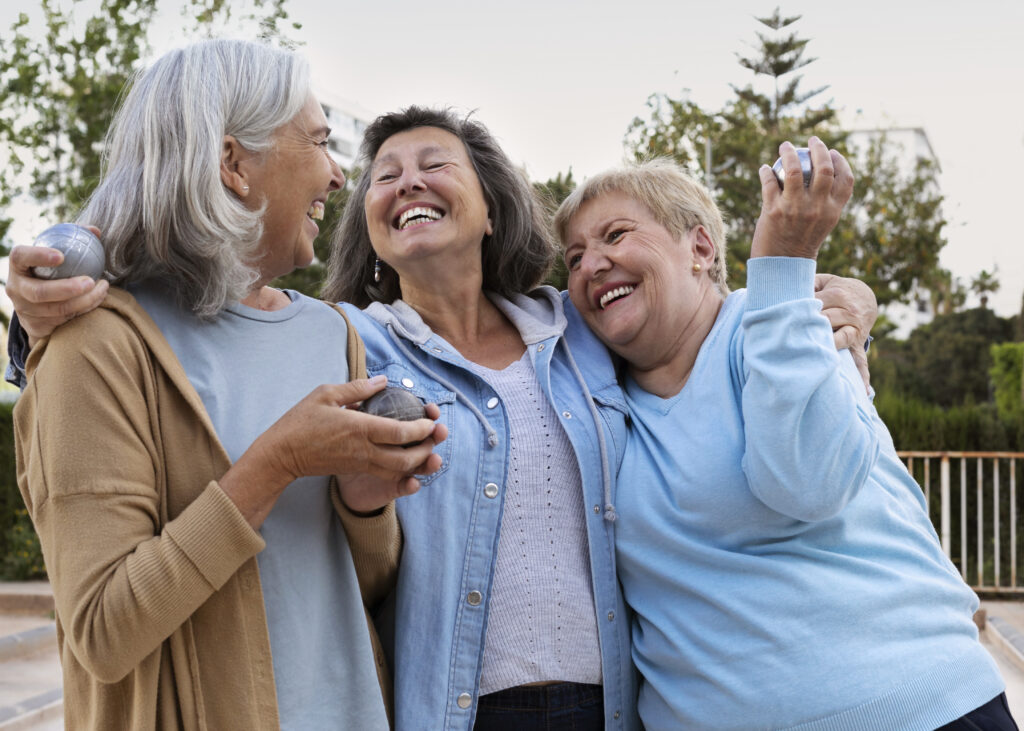
We are all aging. It’s part of life. But we don’t always pay attention to this fact until our bodies experience major changes (usually around age 40 or 50). Whether you are at this age or not, it’s never too early (or late) to support your health through diet. And since September is Healthy Aging Month, it’s a good time to check in on our eating habits. Since we’re going to age anyhow, it might as well be in good health, right?
Emphasize protein
Among the body changes that occur with age is the natural (and very common) loss of muscle mass, called sarcopenia. With less muscle comes less strength, diminished mobility, and an increased risk of falls. Less lean body mass is also associated with insulin resistance and a higher risk for chronic diseases like type 2 diabetes and heart disease.
So what can we do to counter this? Regular exercise, especially strength training, is one way. Getting enough protein is also important to help maintain lean body mass. Food intake data show that among adults aged 71+, roughly 50% of women and 30% of men don’t meet protein recommendations. The optimal amount of protein for older adults is still up for debate. However, the Dietary Guidelines for Americans suggests 5-6.5 ounces per day (about 35-46 g/day). If you currently aren’t eating much protein, that’s a goal to shoot for.
Even if you do meet the recommendation, you might want to consider eating a bit more. It’s believed that older adults don’t process protein as efficiently as younger folks. And recovering from illness or surgery requires more protein. So aiming to spread protein intake throughout the day (say, 25 g per meal) may be the way to go. (Please note: People with kidney disease need to limit protein and should discuss their individual protein needs with a physician or registered dietitian.) Finally, pay attention to protein diversity in your diet. Try to include seafood twice a week. And incorporate soy, nuts, seeds, pulses, and legumes along with the meat or poultry that you eat.
Focus on fluids
Did you know that, as we age, our ability to sense thirst diminishes, and dehydration becomes more common? What’s more, certain medications and medical treatments, as well as diabetes, kidney problems, and cognitive decline, can exacerbate dehydration. All fluids count toward healthy hydration, so what’s the best way to hydrate as we get older? NIH recommends simply increasing the number of beverages you consume daily—that’s pretty easy!.
Regular water is a top choice, of course—and it’s accessible and economical too. Check out the Guiding Stars Beverage Guidance to find other healthy options that limit sugars, added sodium, and other additives. And consider “training” yourself to drink more water. Make it a habit to drink a full glass of water at various regular times throughout the day. For example, when you brush your teeth, when you take medication, and each time you visit the bathroom.
Make your calories count
Adults aged 60 and older generally have lower calorie needs than younger adults. The tricky thing, however, is that older folks often have higher nutrient needs, according to the Dietary Guidelines for Americans. So this presents a challenge, but not an insurmountable one. There is a way to fill your daily diet with nutrient-rich, lower-calorie foods—it’s a concept called nutrient density.
You don’t have to eat foods you don’t like (I would never suggest that)! Instead, focus on eating nutritious, whole foods and incorporating a lot of variety into your diet. Choose different fruits and vegetables each week. Use vegetable proteins, seafood, and different whole grains in your meals. Do not eat the same foods all the time! Then, when shopping online or in person, follow the Guiding Stars. Guiding Stars is all about comparing nutrient density among products. And the Guiding Stars signage can help you be sure you’re getting the more nutritional value per bite.